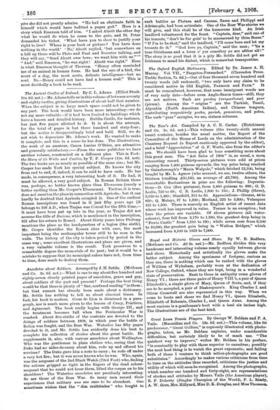and eighty castles, giving illustrations of about half that number.
When the subject is so large much space could not be given to any part. The book would have been more interesting—we do not say more valuable—if it had been limited to buildings which have a known and detailed history. Dublin Castle, for instance, has just five pages allotted to it. It is about the average, for the total of pages is but three hundred and sixty-four; but the notice is disappointingly brief and bald. Still, we do not wish to depreciate Mr. Adams's work. He wanted to make it complete, and this in a sense he has done. The illustrations, the work of an amateur, Canon Lucius O'Brien, are attractive and generally satisfactory.—From the same publisher we have another volume, constructed on a different plan. This is Pork: the Story of its Walls and Castles, by T. P. Cooper (10s. 6d. net). The two books are as nearly as possible of the same size ; but Mr. Cooper has made York his special subject. He knows the city from end to end, if, indeed, it can be said to have ends. He has made, in consequence, a very interesting book of it. He had, it must be allowed, a very good subject. In Roman Britain there was, perhaps, no better known place than Eboracum (surely a better spelling than Mr. Cooper's Eburacum). Tacitus, it is true, does not mention the place in connection with Agricola ; but it can hardly be doubted that Agricola occupied it. One of the earliest Roman inscriptions was found in it just fifty years ago (it belongs to 103 A.D., when Trajan was Consul for the fifth time,— it must have been put up late in the year, as Trajan did not assume the title of Dacicus, which is mentioned in the inscription, till after his return to Rome). About thirty years later Ptolemy mentions the place as the headquarters of a legion (the sixth). Mr. Cooper identifies the Roman sites with care, the most important being the multangular tower still to be seen in the walls. The history of the city is taken period by period in the same way ; some excellent illustrations and plans are given, and a very valuable volume is the result. York preserves to a remarkable degree the memorials of its past ; but it would be a mistake to suppose that its municipal rulers have not, from time to time, done much to destroy them.










































 Previous page
Previous page